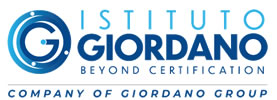New Construction Products Regulation (CPR) 2024/3110
What changes for the construction sector?
The European construction sector is undergoing a significant transformation with the entry into force of Regulation (EU) 2024/3110, which replaces the previous Regulation (EU) 305/2011 on the marketing of construction products.
The introduction of Regulation (EU) 2024/3110 presents both a challenge and an opportunity for the construction industry. On the one hand, it imposes new compliance obligations for construction products; on the other, it promotes transparency, sustainability, and digitalization—key elements increasingly demanded by the market.
Companies that quickly adapt to the new framework can gain a competitive advantage and become key players in a more modern and sustainable construction supply chain.
The Regulation is into force from January 7, 2025, and will be fully applicable from January 8, 2026.
However, the practical implementation of the new CPR depends on the publication of harmonized product standards in the Official Journal of the European Union. A detailed roadmap has been established, outlining the anticipated timelines for reviewing and updating the standards. As a result, the old and new CPR regulations will coexist for several years.
As a certification body and testing laboratory for construction products, Istituto Giordano is prepared to support companies in adapting to the new regulatory framework.
How can companies ensure compliance?
To comply with the new regulatory framework, companies must adopt a proactive approach. Key steps include:- Assessing the regulatory compliance of existing products on the market.
- Reviewing declarations of performance and conformity in line with new standards.
- Implementing digital tools for efficient product data management.
- Monitoring environmental requirements to align with new sustainability obligations.
With the right preparation, companies can turn regulatory changes into opportunities and position themselves at the forefront of a modern, compliant, and sustainable construction industry.








 Do you need more information about our services?
Do you need more information about our services?